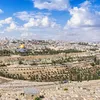From Big B to Irrfan Khan: This street art project creates giant murals of Bollywood icons
The Bollywood Art Project (BAP) is an urban art project that is beautifying Mumbai streets with gigantic portraits of filmstars across generations
In the show My Next Guest Needs No Introduction’s episode featuring Shah Rukh Khan, the shot opens with the camera panning through life-size murals of Bollywood icons.
A burst of colour splashed across rickety old houses and colonial bungalows, with SRK’s regal sea-facing mansion ‘Mannat’ just a few feet apart, the radiant murals suck you right into Mumbai, the home of Bollywood.
Those giant pop art creations are the handiwork of internationally acclaimed street artist Ranjit Dahiya, who moved to Mumbai in 2008 after graduating from the National Institute of Design.
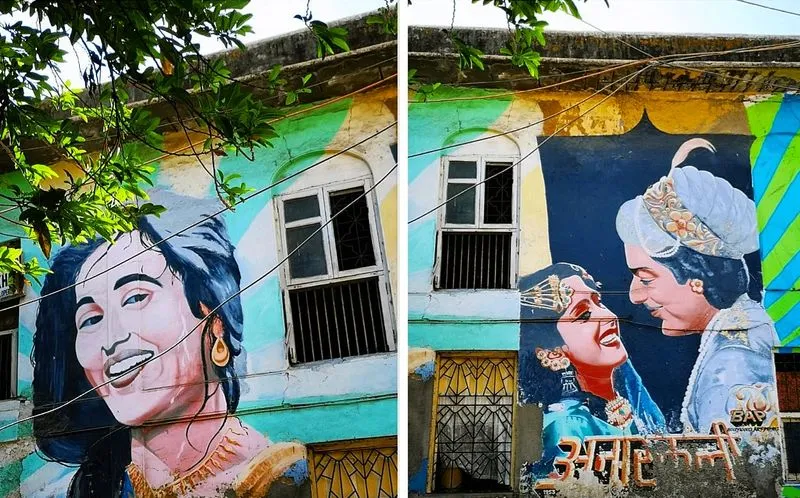
Photo: Sohini Mitter
The artist and his inspiration
Stuck in the monotonous job of a UI designer at an internet firm, Ranjit craved ‘innovation’ and wanted to do something more than just designing brand logos.
A self-confessed Bollywood buff, who's named his cats after filmi characters, he was also appalled by the fact that India’s entertainment capital had almost no public displays of movies or filmstars.
“Bollywood ke naam pe kya hai? SRK aur Bachchan Saab ka ghar? Bas yahi dekhne aate hain log! (People come to see only SRK and Bachchan Saab's houses. What else is there?) Bombay is a film city but has nothing to show for it. Classical Bollywood ko log bhul chuke hai. (People have forgotten the yesteryear stars) Who are our icons? Who made Hindi cinema what it is today? There is no such project in public places,” he tells YS Weekender.

Ranjit Dahiya, Artist & Founder, Bollywood Art Project
Ranjit wanted to remedy the situation. So, he married his vocation (artistry) and avocation (movies) to start Bollywood Art Project (BAP) in 2012.
The urban art project seeks to revive the city’s glorious cinematic history and pay homage to its many cultural icons. “When you enter the city, you should see something and go, ‘Oh! So, we’re in Mumbai’,” he says.
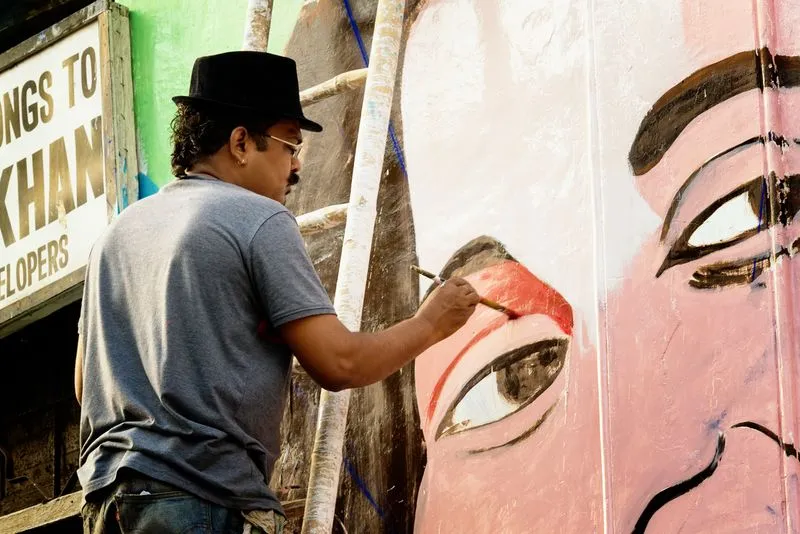
Photo: BAP
Building Mumbai’s street art scene
BAP started from Bandra’s Ranwar Village, a quaint area dotted with 17th century heritage buildings dating back to when Bombay was a Portuguese colony.
With large wooden porches, external staircases, triangular roofs, and wrought iron gates, the houses not only bear a distinct colonial influence, but also stand out in a city of teeming skyscrapers. They also serve as Ranjit’s art canvases.
BAP has turned the sleepy bylanes of Ranwar Village into a vibrant street art hub drawing comparisons from New York’s Greenwich Village, London’s Wynwood Art District, Delhi’s Hauz Khas, and other major art hubs of the world.
It has created close to 45 murals. From Dadasaheb Phalke (who’s touted as the Father of Indian Cinema) to Raj Kapoor, Nargis, Madhubala, Guru Dutt, and Dev Anand to Rajesh Khanna, Shashi Kapoor, Amitabh Bachchan, and Smita Patil to Amrish Puri, Sridevi, and the just deceased Irrfan Khan – BAP has covered over a 100 years of Hindi cinema.
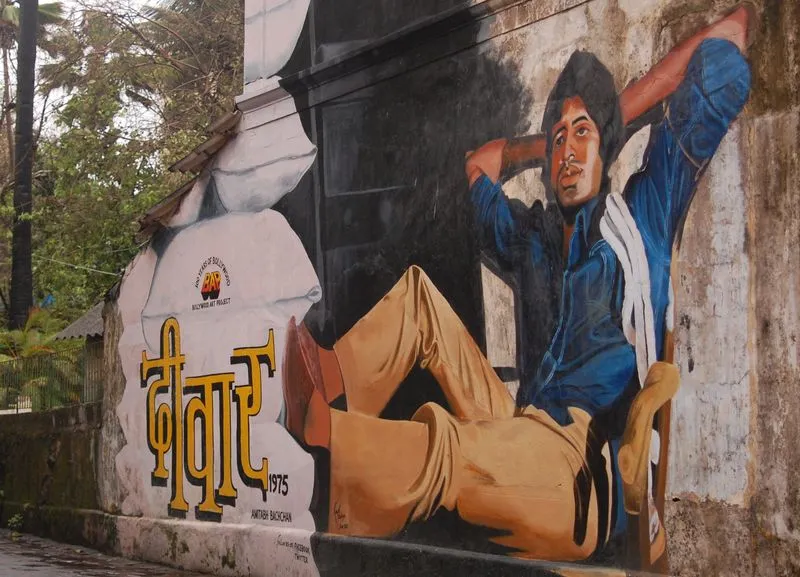
Photo: BAP
Its latest mural of Irrfan Khan was completed within four days of his demise. How did BAP manage to get painting permissions in the middle of a lockdown?
Ranjit tells us, “Mujhe khabar mili toh bahut dukh hua. (I was very saddened by the news of his passing) I thought I should do something for him. So, I went to Waroda Road [in Ranwar] and located a house. Then I approached the owner for permission, and he agreed, saying, ‘It’s your wall, paint whatever you want.’ I started work while maintaining all the social distancing rules.”
Incidentally, the Irrfan Khan mural stands on a house that is a stone’s throw away from where The Lunchbox was shot in 2013. Waroda Road is also home to the film’s director Ritesh Batra. “I wanted to make some connections,” says Ranjit.
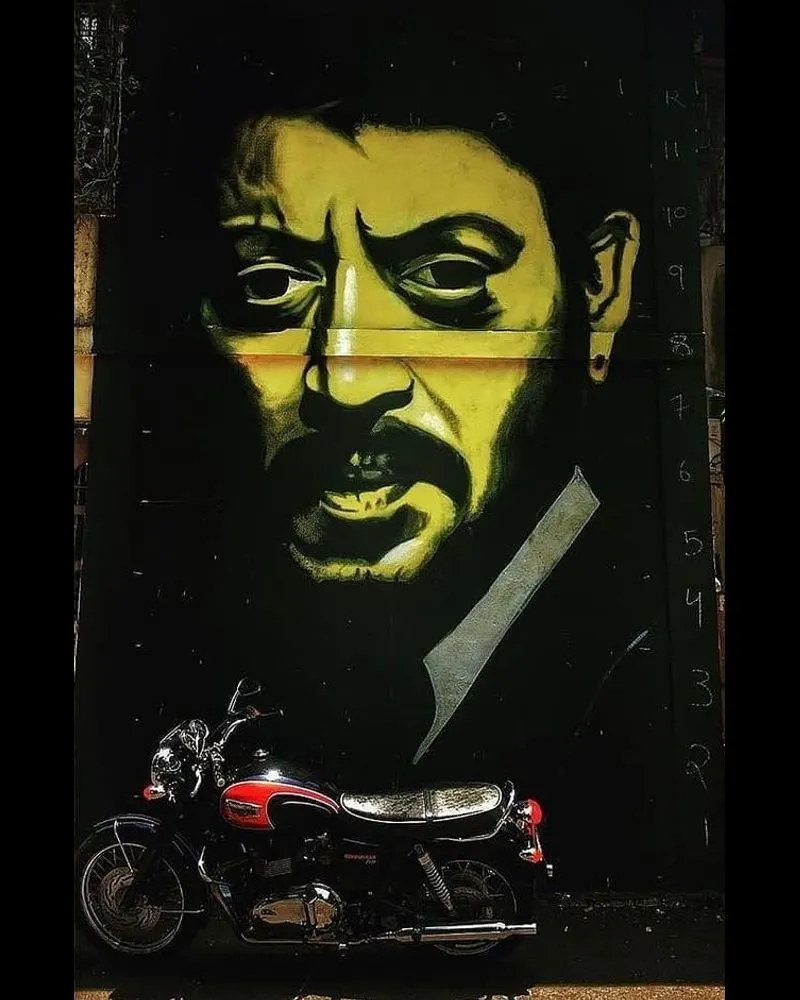
Photo: BAP | Twitter
BAP now plans to create a Rishi Kapoor (who passed away a day after Irrfan) mural, and has already identified a house. Ranjit says his list is ever growing.
“There are more than 150 people I want to paint. Helen is a priority. She brought glamour to Hindi cinema. There’s Johnny Walker and Balraj Sahni, all these people are legends,” he says.
In a rare departure from the film district of Bandra, BAP murals have also found a home in the IIT Bombay campus in Powai (the city's startup hub). “A few years ago, we created Dil Chahta Hai poster art at IIT-B’s annual festival. It was fresh and youthful,” Ranjit shares.

Photo: BAP | Facebook
Scaling new heights
When you enter Bandra from South Mumbai, the first sight that greets you is a gigantic 120X150 feet mural of Dadasaheb Phalke stretched across the MTNL building.
It is India’s largest recorded mural, which required 400 litres of paint. The project coincided with the centenary year of Indian cinema, and was a tribute to Phalke, who is credited for making the country’s first feature film Raja Harishchandra (1913).
“It was a sponsored project in association with Delhi’s St+Art India Foundation. They had invited artists from all over the world. Amitabh Bachchan came for the launch of the Phalke painting,” Ranjit reveals.
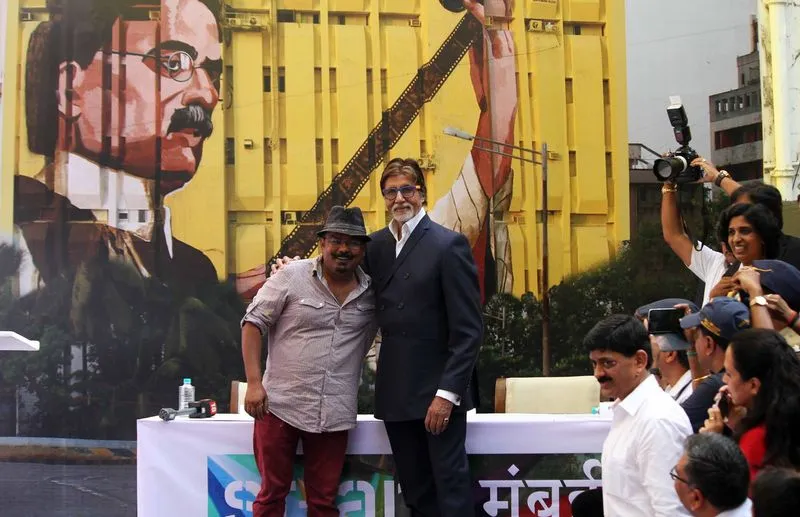
Ranjit with Amitabh Bachchan at the opening of the Dadasaheb Phalke mural
Since then, BAP has travelled to several art and film festivals across the globe, earning acclaim from critics and connoisseurs alike.
Its History of Bollywood show, a collection of paintings of 30 iconic Hindi film posters, was exhibited at La Rochelle, France during the 32nd International Festival. It also went to Durban, South Africa, and later, found its way to Delhi’s IIC.
BAP’s trademark lies in its lifelike recreation of scenes and actor expressions that have defined Hindi cinema down the decades.
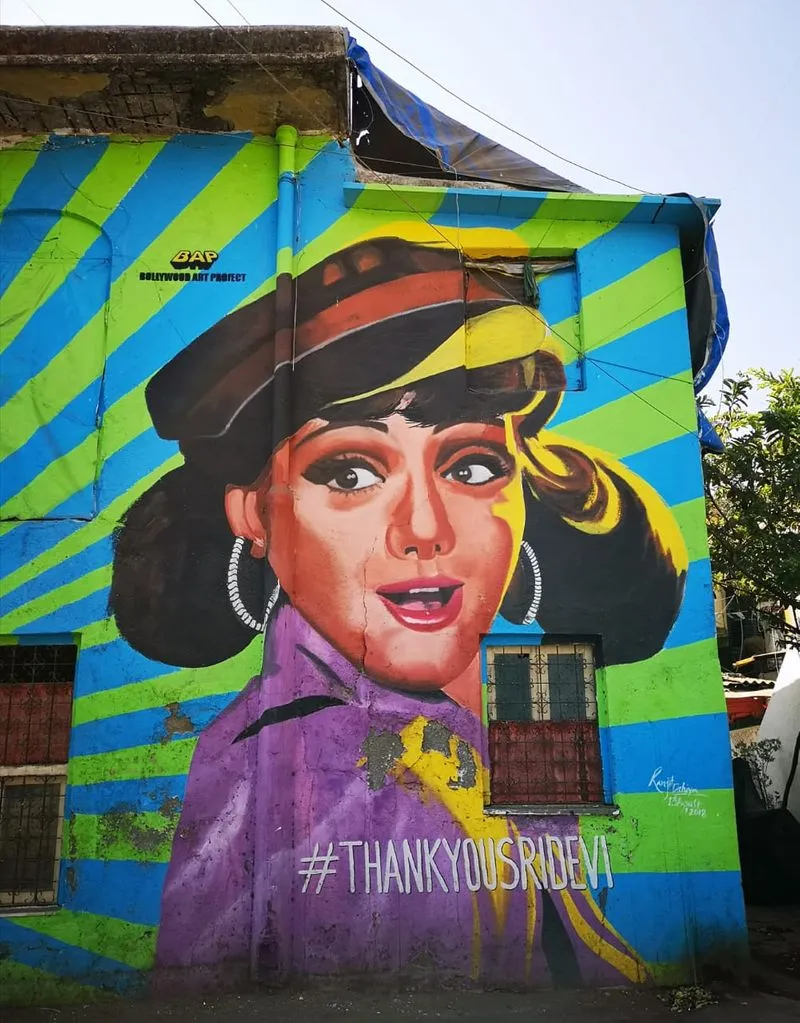
Photo: Sohini Mitter
From Madhubala’s lovesick Anarkali in Mughal-e-Azam to the electrifying pair of Raj Kapoor and Nargis from Shri 420 to Big B’s ‘Angry Young Man’ from Deewar to a playful Sridevi and a villainous Mogambo (Amrish Puri) from Mr. India to a brooding Guru Dutt from Kaagaz Ke Phool — Ranjit’s artworks will leave an indelible impression.
In 2013, BAP painted cricket icon Sachin Tendulkar in what is its sole non-Bollywood mural till date. It was an exception made for an exemplary sportsman who'd just retired from the game after 24 years.
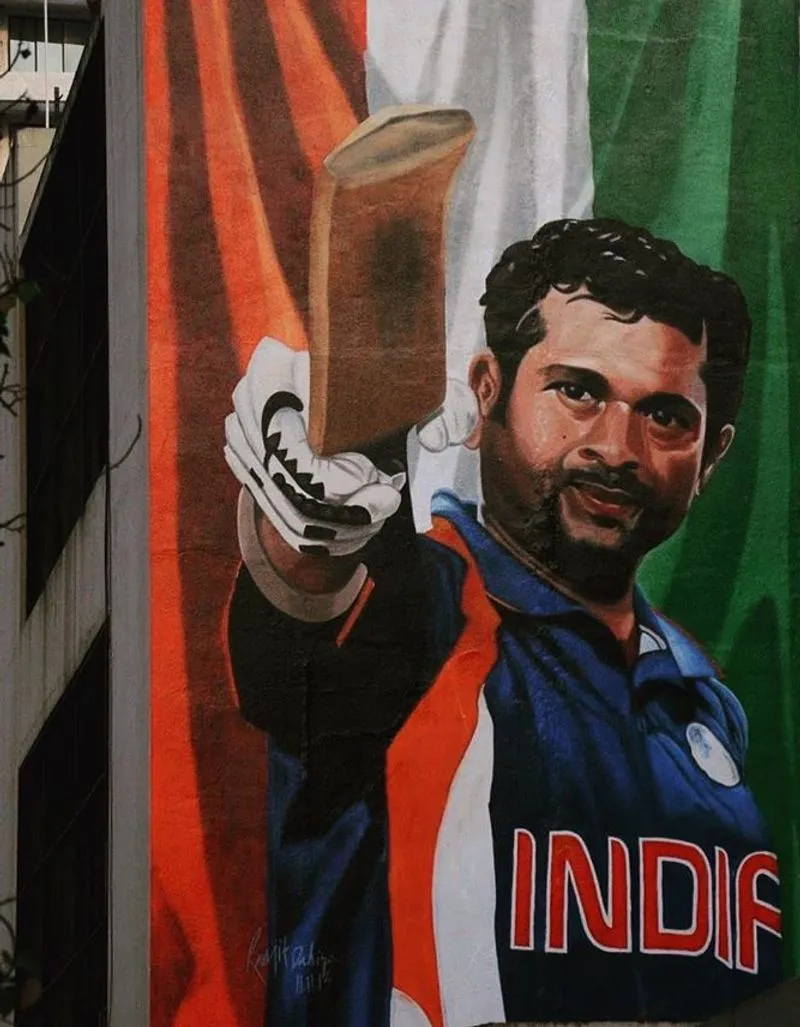
Photo: BAP | Facebook
Overcoming roadblocks
But not all may be hunky-dory.
In effect, BAP is still a one-man team, with occasional contract labour assisting Ranjit with fetching paint, sourcing and carrying equipment. Finances are a lingering problem too.
The founder shares, “If I send proposals to companies, they are ready to provide funds. But they will demand sponsor logos in the artworks. That is the problem with commercial arrangements. Mujhe yeh sab tension hi nahi chahiye. (I don't want these tensions). This is a passion project for me. So, I’m paying out of my own pocket.”
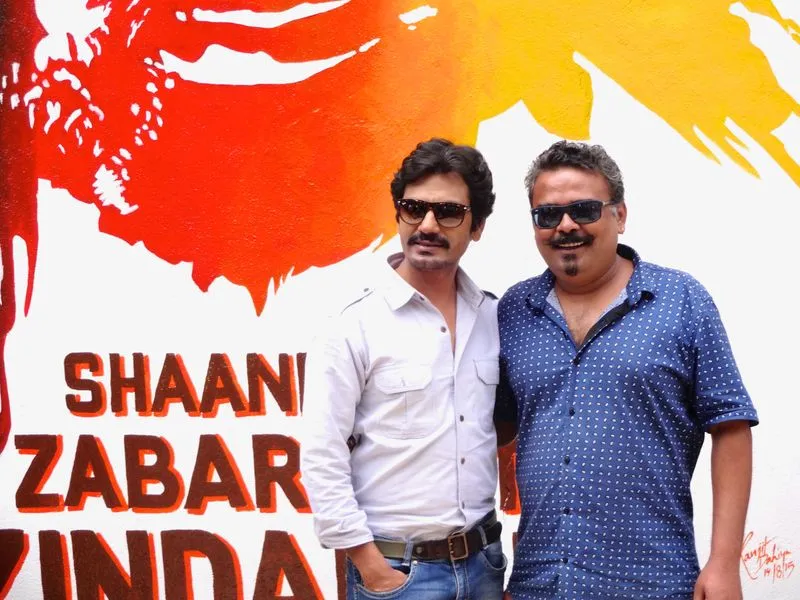
Ranjit with Nawazuddin Siddiqui at the launch of his film's poster art
His own pocket is sustained by teaching jobs at Mumbai’s art and architecture colleges, street painting workshops, heritage art walks with tourists, and so on.
It allows Ranjit to stay abreast of the youth’s tastes and preferences, and what they find “cool”. “I think street art has some value for today’s generation. Even the government is spending on it now,” he says.
Achhe din for BAP then? Any commissioned projects in the pipeline?
“I’m looking at a few things,” says Ranjit, “Par kalakaar sirf tareef ka bhookha hota hai, paise ka nahi.” (An artist is hungry for appreciation, not money.)
Surely, he has enough then!
Edited by Asha Chowdary



